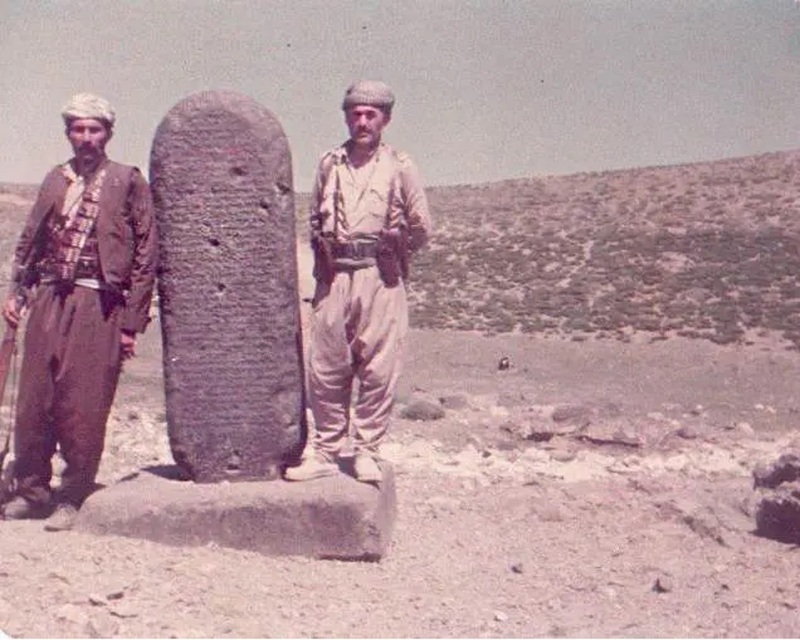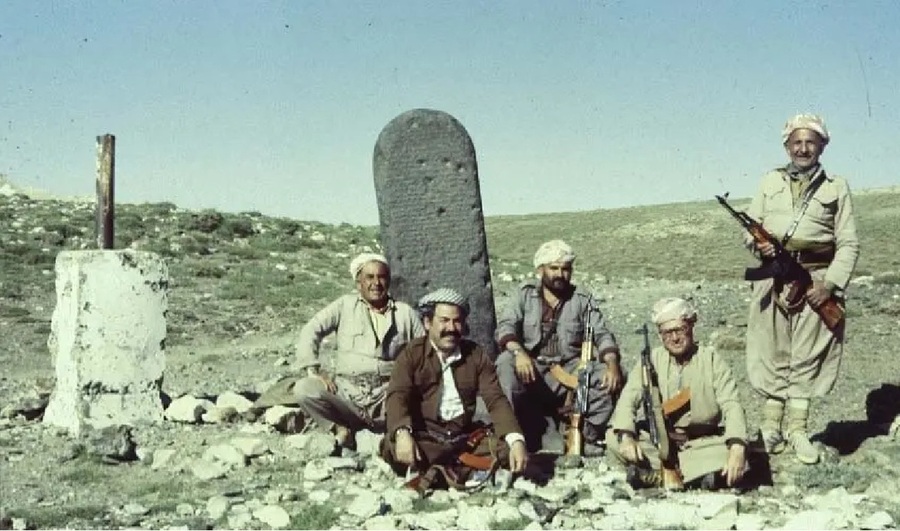Location of the Kelashin Inscription
The inscription of Kelashin is one of the most important historical heritages of Kurdistan, and it was placed about four thousand years in which is now the border between the South and East parts of Kurdistan. It is now kept in the Museum of Urmia.
The Kelashin inscription was found near the village of Kelashin, which is located on the current border between the South and East parts of Kurdistan, and near the village of Drud, west of the city of Shino. This inscription was placed on a mountain between the town of Sidakan and the city of Shino. During the eight-year war between Iran and Iraq, when the border areas became the scene of clashes between the armed forces of the two countries, at the request of the local people, the inscription was moved to the Urmia Museum for preservation.
Although the inscription should have been returned to its place after the war ended or to a museum in Shino, the Islamic Republic of Iran has not allowed this to be done.
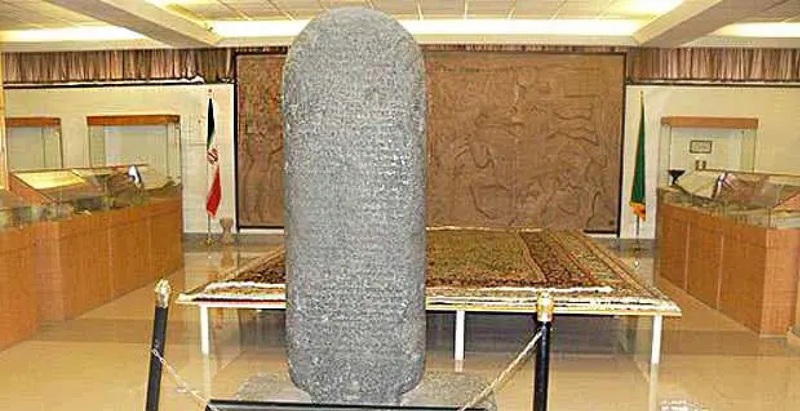
Characteristics of the Kelashin Inscription
The inscription is 167 cm high and 40 cm wide. At the bottom of the inscription is a pedestal 23 cm long and 4 cm high. The stone is between 28 and 30 centimeters thick from top to bottom and weighs 1600 kilograms.
The type of stone used to make the inscription is not available in the area, so it seems that the stone was brought from a distant place.
The inscription is written on all four sides in two languages, Urartu and Assyrian, in nail characters. The Assyrian part has been badly damaged by bullets, while the Urartu portion has been damaged by wind and rain, but the inscription is generally legible.
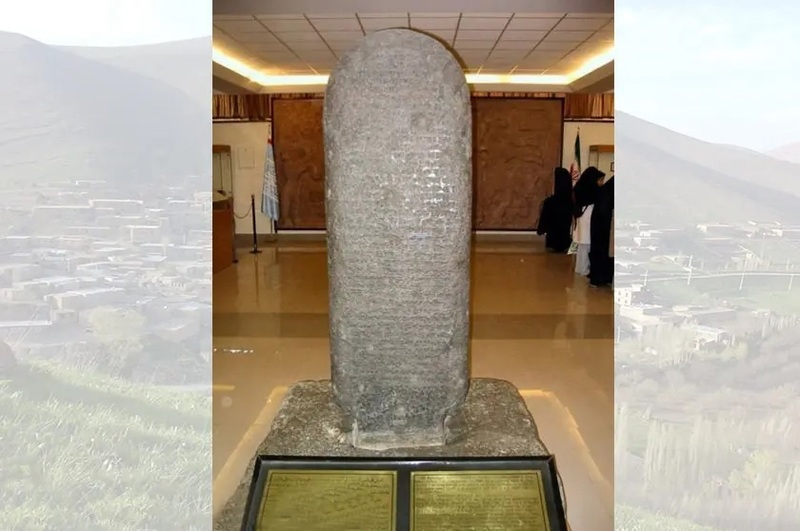
The fame of Kelashin and the history of its discovery
A German archaeologist named Schultz was the first to introduce Kelashin to the world. The archaeologist discovered the inscription in 1829 and wrote the inscription again. After he was murdered in 1838, however, no text of the inscription was found.
After this incident, a British archaeologist named Rawlsnin, who had also recorded the archaeological site of Kermashan, was the second person to rewrite some of the text on this inscription on paper and deliver it to scientists, archaeologists, and experts in ancient writings.
Later, in 1853 and 1858, two men named Khanikov and Blau could mold the Kelashin inscription. In 1858, Blau prepared and published an article on the collection of studies written on Kelashin.
In 1882, an orientalist named Psyche was able to read and translate the Urartu text of Keleshin.
In 1890, a French archaeologist named Jacques De Morgan visited the area with one of the nobles of the Zarza tribe of Shino. In two hours, in the "Aschampage" style, he made a complete mold of the entire lithograph for the first time. This archaeologist later sent part of Kelashin's Assyrian text to Perchil, one of the most famous Assyrian scholars of the time. Perchil, with great effort, was finally able to translate the text and publish it with an introduction in a Paris newspaper.
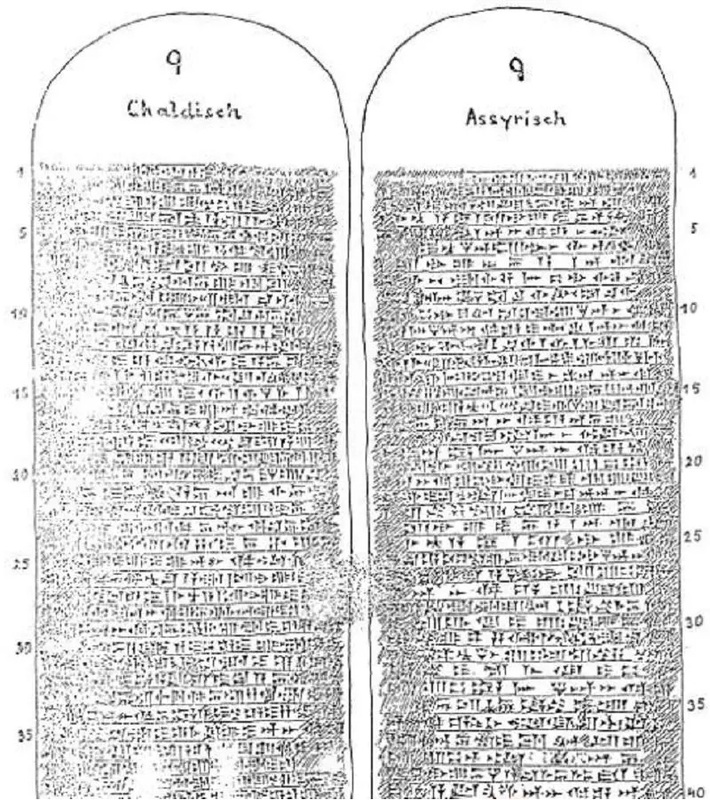
Text on the Kelashin inscription:
When "Ishpuni" son of "Sardur"
great king, mighty king,
King of the world
King of Nayri
The great sovereign of Tushibashar and his son Manwa,
To the God of Khalidi in the city of Musasir
They came to this high temple built for the god Khalid
Ishpuni, son of Sardur, brought valuable weapons of war and beautiful herds
"Ishpuini" brought metallic equipment and metallic pots
"Ishpuini" has brought a lot of herds,
He put all these gifts back in the temple.
Ishpuini gave all these gifts in exchange for twelve Khalidis
To continue his life, he offers it to God “Khalidi”
"Ishpuini" as a sign of charity, brought 1112 cows,
9120 fat sheep and 12480 fat goats for donation
When "Ishpuini" son of "Sardur"
great king, mighty king,
king of the world
King of Nayri
The great sovereign of the city of Tushibashar prayed to the God of Khalidi.
for the mercy of God "Khalidi"
This ...
Ishpuini then placed these animals and objects at the gates of the temple of the god Khalidi.
In Musasir, the guards had left the herds or stopped protecting them.
They stole and sold them at the door of God Khalidi.
When Ishpuni son of Sardur and Manwa son of Ishpuni came to the city of Musasir to pray
They offered a herd to the god Khalidi and said:
Whoever steals these herds from the door of God Khalidi, whoever sees them stealing and hiding in the darkness,
Everyone who lives in the city of Musasir and hears that these herds are being stolen from the door of the god Khalidi, God Khalidi will have no mercy on them and will have no offspring on earth.
Whoever takes this inscription from here, whoever breaks this stone, whoever tells someone else to break this inscription, all the gods of the city of Musasir, the god Khalidi, the god of air, and the god of the sun will give them no offspring on earth.
